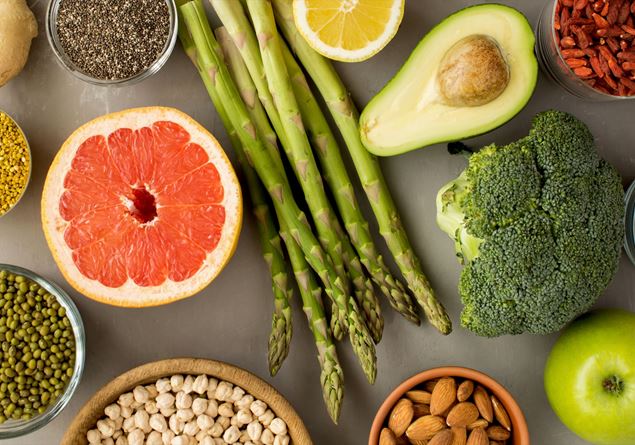by Nicoletta L.Bagliano
Plunging temperatures, frost and snow: we are ready to be slapped by the Arctic saber, with an extra sweater on and a steaming cup in our hands. What we drink and eat, in reality, can be of great help (or on the contrary a hindrance) to feel the cold less, recharge our batteries and make us face these harsh winter days with more energy. So how to regulate yourself at the table? Anna Rana, nutritional biologist, author of A weight in the heart And The heart of taste.
Foods that shouldn’t be missed
Cereals. In pole position among the anti-cold foods are them: rice, barley, spelt, in short, all cereal grains. Their added value lies in the B vitamins, fundamental substances for the body, which increase its resistance to low temperatures and provide energy. The lack of these elements causes tiredness and fatigue, conditions that increase the perception of cold. Furthermore, whole grains slow down the absorption of sugars and keep you feeling full for longer.
Legumes. They are a real mine of iron, an essential mineral in the winter season to resist the intense cold. Beans (borlotti and cannellini) are richest in them, followed by lentils, chickpeas and peas. The winning mix at the table is the one with cereals (the classic pasta and beans or pasta and chickpeas are excellent), to be used in the main meals: energetic and satiating, these dishes are also an excellent source of fibre, which helps the body to warm up without weighing it down. The combination of cereals and legumes also lends itself to soups and minestrone, which are easy to prepare and nutritious, perfect for combating the cold.
Citrus & Co. We certainly cannot forget fruit, in particular oranges, clementines, grapefruits but also kiwis. All very rich in vitamin C, another great protagonist of the winter table (and with two kiwis we cover our daily needs!). It is the basic substance that strengthens the immune system, defending us from infections and allowing us to resist seasonal ailments (of bacterial and viral origin) as well as low temperatures.
The carrots. Fundamental on cold days because they contain beta-carotene, a precursor of vitamin A, they stimulate the production of T lymphocytes, white blood cells that act as “scavengers” in our blood, strengthening natural defenses, as well as having an anti-inflammatory action. If you don’t like carrots, you can move on: the important thing is to choose seasonal and preferably cooked vegetables: for example, broccoli, radicchio and pumpkin.
Dried fruit. It’s the perfect snack to break hunger: practical and energetic, it’s good for your mood and doesn’t weigh you down (this is why it’s also recommended before sporting activity). Almonds, peanuts, walnuts and hazelnuts are an effective anti-cold strategy: in fact they are rich in zinc and vitamin E, beneficial substances for the skin, often affected by dryness linked to winter frost.
Foods that are best avoided
Alcohol. “I’ll make myself a glass so I can warm up”: this is the first false myth of winter nutrition. The anti-cold effect of alcohol, in fact, is only illusory. The immediate reaction of vasodilation – which is associated with the sensation of heat – is followed by an opposite reaction of vasoconstriction, which accentuates the perception of cold.
Packaged snacks. Another “no” among seasonal foods (but it remains a general rule of healthy eating) is that aimed at industrial sweets and similar. Rich in refined sugars they raise the blood sugar level, causing a “peak”, which is followed by a drop in energy, thus increasing the sense of tiredness and even cold. They are also rich in salt, which promotes the rise in blood pressure as well as water retention and weight accumulation.
The fried foods. Rich in saturated fats, they make digestion more difficult and increase the level of inflammation, reducing the efficiency of the immune system and taking away strength from the body, which will react to the cold with more difficulty.
Carbonated drinks. They should be limited, together with frozen juices: in addition to complicating the digestive process, they slow down circulation, intensifying the perception of cold, in a period of the year when the body needs to warm up.
The salads. In winter, it’s better not to eat them every day. Raw vegetables (lettuce, cucumbers, tomatoes) are not easily digestible: let’s reserve them for a milder season.
A “cuddle” to warm up
With food you can warm yourself… and reward yourself. Among the anti-cold foods we can add the dark chocolatean ideal dessert in the winter season (one or two squares at the end of the meal don’t hurt, on the contrary!): a precious mine of iron and magnesium, the first useful for resisting low temperatures and the second effective against muscle cramps and tiredness .
What if we want a hot drink? The infusion of ginger promotes blood circulation and warms the bronchi. For tea lovers, in addition to green tea, the matcha teato be sipped throughout the day: it keeps the body warm, removes toxins and at the same time fights cold symptoms.
Finally, to add to dishes, a pinch of cinnamon or of chilidepending on taste: they increase body temperature and stimulate the metabolism.










